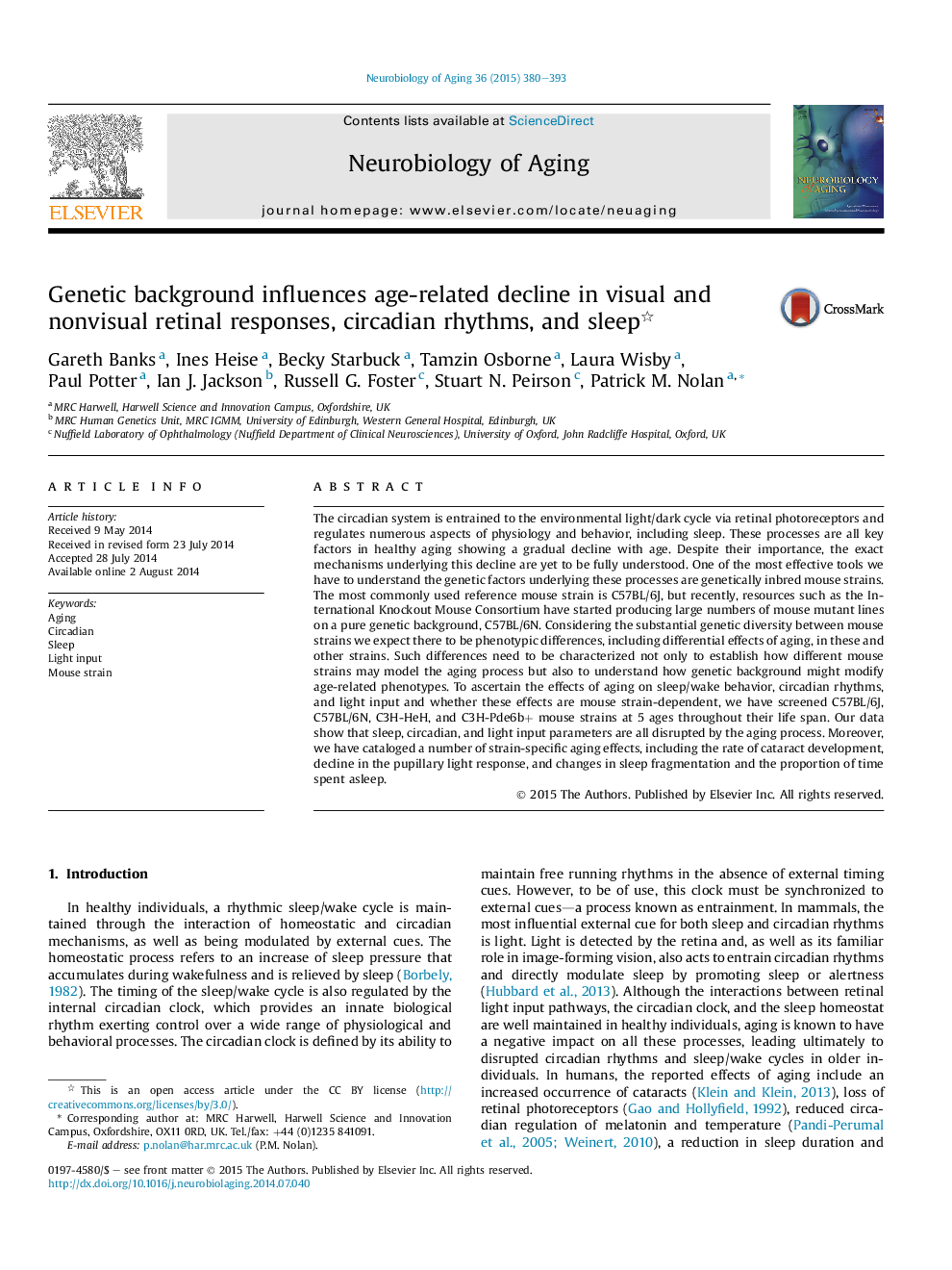| کد مقاله | کد نشریه | سال انتشار | مقاله انگلیسی | نسخه تمام متن |
|---|---|---|---|---|
| 6805085 | 1433560 | 2015 | 14 صفحه PDF | دانلود رایگان |
عنوان انگلیسی مقاله ISI
Genetic background influences age-related decline in visual and nonvisual retinal responses, circadian rhythms, and sleep
ترجمه فارسی عنوان
پس زمینه ژنتیکی بر کاهش سن در پاسخ های شبکیه بصری و غیر منظم، ریتم های روزانه و خواب تاثیر می گذارد
دانلود مقاله + سفارش ترجمه
دانلود مقاله ISI انگلیسی
رایگان برای ایرانیان
کلمات کلیدی
سالخورده، دوران کودکی، خواب ورودی نور فشار مغزی،
موضوعات مرتبط
علوم زیستی و بیوفناوری
بیوشیمی، ژنتیک و زیست شناسی مولکولی
سالمندی
چکیده انگلیسی
The circadian system is entrained to the environmental light/dark cycle via retinal photoreceptors and regulates numerous aspects of physiology and behavior, including sleep. These processes are all key factors in healthy aging showing a gradual decline with age. Despite their importance, the exact mechanisms underlying this decline are yet to be fully understood. One of the most effective tools we have to understand the genetic factors underlying these processes are genetically inbred mouse strains. The most commonly used reference mouse strain is C57BL/6J, but recently, resources such as the International Knockout Mouse Consortium have started producing large numbers of mouse mutant lines on a pure genetic background, C57BL/6N. Considering the substantial genetic diversity between mouse strains we expect there to be phenotypic differences, including differential effects of aging, in these and other strains. Such differences need to be characterized not only to establish how different mouse strains may model the aging process but also to understand how genetic background might modify age-related phenotypes. To ascertain the effects of aging on sleep/wake behavior, circadian rhythms, and light input and whether these effects are mouse strain-dependent, we have screened C57BL/6J, C57BL/6N, C3H-HeH, and C3H-Pde6b+ mouse strains at 5 ages throughout their life span. Our data show that sleep, circadian, and light input parameters are all disrupted by the aging process. Moreover, we have cataloged a number of strain-specific aging effects, including the rate of cataract development, decline in the pupillary light response, and changes in sleep fragmentation and the proportion of time spent asleep.
ناشر
Database: Elsevier - ScienceDirect (ساینس دایرکت)
Journal: Neurobiology of Aging - Volume 36, Issue 1, January 2015, Pages 380-393
Journal: Neurobiology of Aging - Volume 36, Issue 1, January 2015, Pages 380-393
نویسندگان
Gareth Banks, Ines Heise, Becky Starbuck, Tamzin Osborne, Laura Wisby, Paul Potter, Ian J. Jackson, Russell G. Foster, Stuart N. Peirson, Patrick M. Nolan,
